Features
Georgia’s stolen children: Twins sold at birth reunited by TikTok video
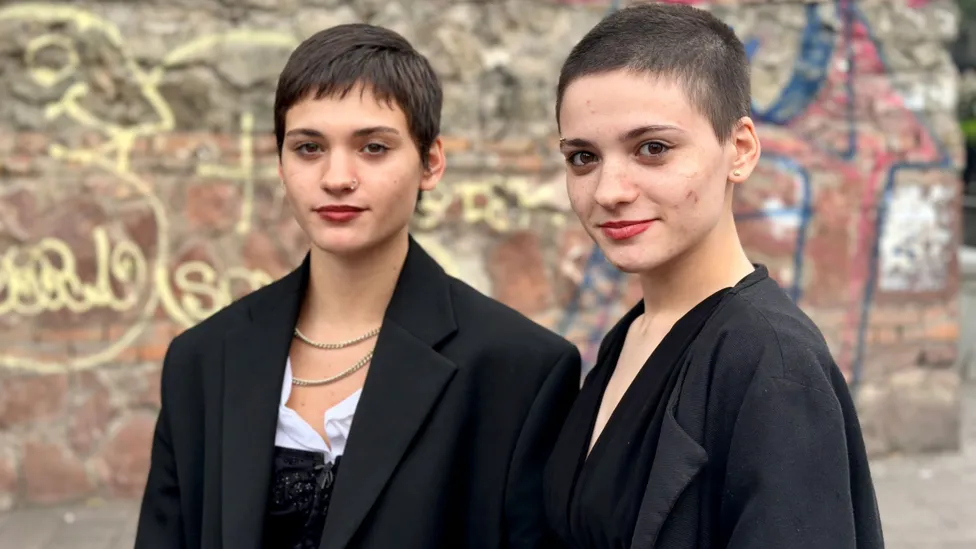
Amy and Ano are identical twins, but just after they were born they were taken from their mother and sold to separate families. Years later, they discovered each other by chance thanks to a TV talent show and a TikTok video. As they delved into their past, they realised they were among thousands of babies in Georgia stolen from hospitals and sold, some as recently as 2005. Now they want answers.
Amy is pacing up and down in a hotel room in Leipzig. “I’m scared, really scared,” she says, fidgeting nervously. “I haven’t slept all week. This is my chance to finally get some answers about what happened to us.”
Her twin sister, Ano, sits in an armchair, watching TikTok videos on her phone. “This is the woman that could have sold us,” she says, rolling her eyes. Ano admits she is nervous too, but only because she doesn’t know how she will react and if she will be able to control her anger.
It’s the end of a long journey. They have travelled from Georgia to Germany, in the hope of finding the missing piece of the puzzle. They are finally meeting their birth mother.
For the past two years they have been building a picture of what happened. As they unravelled the truth, they realised there were tens of thousands of other people in Georgia who had also been taken from hospitals as babies and sold over the decades. Despite official attempts to investigate what happened, nobody has been held to account yet.
The story of how Amy and Ano discovered each other starts when they were 12.
Amy Khvitia was at her godmother’s house near the Black Sea watching her favourite TV programme, Georgia’s Got Talent. There was a girl dancing the jive who looked exactly like her. Not just like her, in fact, identical.
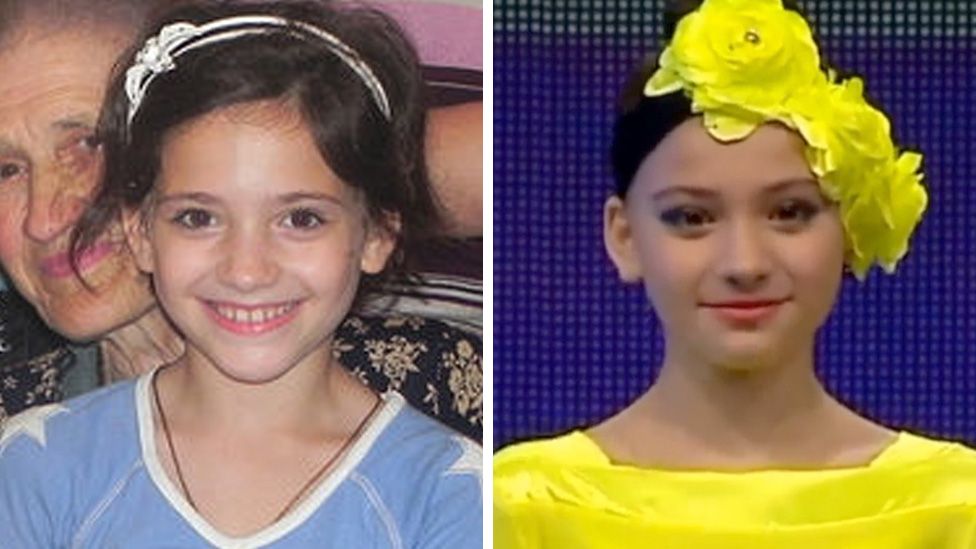
“Everyone was calling my mum and asking: ‘Why is Amy dancing under another name?'” she says.
Amy mentioned it to her family but they brushed it off. “Everyone has a doppelganger,” her mother said.
Seven years later, in November 2021, Amy posted a video of herself with blue hair getting her eyebrow pierced on TikTok.
Two hundred miles (320km) away in Tbilisi, another 19-year-old, Ano Sartania, was sent the video by a friend. She thought it was “cool that she looks like me”.
Ano tried to trace the girl with the pierced eyebrow online but couldn’t find her, so she shared the video on a university WhatsApp group to see if anyone could help. Someone who knew Amy saw the message and connected them on Facebook.
Amy instantly knew Ano was the girl she had seen all those years ago on Georgia’s Got Talent.
“I have been looking for you for so long!” she messaged. “Me too,” replied Ano.

Over the next few days, they discovered they had a lot in common, but not all of it made sense. They were both born in Kirtskhi maternity hospital – which no longer exists – in western Georgia but, according to their birth certificates, their birthdays were a couple of weeks apart.
They couldn’t be sisters, much less twins. But there were too many similarities.They liked the same music, they both loved dancing and even had the same hairstyle. They discovered they had the same genetic disease, a bone disorder called dysplasia.
It felt like they were unravelling a mystery together. “Every time I learned something new about Ano, things got stranger,” says Amy.
They arranged to meet and a week later, as Amy approached the top of the escalator at Rustaveli metro station in Tbilisi, she and Ano saw each other in the flesh for the very first time. “It was like looking in a mirror, the exact same face, exact same voice. I am her and she is me,” says Amy. She knew then that they were twins.
“I don’t like hugs, but I hugged her,” says Ano.
Amy was upset and felt her whole life had been a lie. Dressed head to toe in black she looks tough, but she fiddles with her studded choker nervously and wipes a mascara-stained tear away from her cheek. “It’s a crazy story,” she says. “But it’s true.”
Ano was “angry and upset with my family, but I just wanted the difficult conversations to be over so that we could all move on”.
Digging deeper, the twins found the details on their official birth certificates, including the date they were born, were wrong.
Unable to have children, Amy’s mother says a friend told her there was an unwanted baby at the local hospital. She would need to pay the doctors but she could take her home and raise her as her own.
Ano’s mother was told the same story.
Neither of the adoptive families knew the girls were twins and despite paying a lot of money to adopt their daughters, they say they hadn’t realised it was illegal. Georgia was going through a period of turmoil and as hospital staff were involved they thought it was legitimate.
Neither family would reveal how much money was exchanged.
The twins couldn’t help wondering if their biological parents had sold them for profit.

Amy wanted to search for their birth mother to find out, but Ano wasn’t sure. “Why do you want to meet the person that could have betrayed us?” she asked.
Amy found a Facebook group dedicated to reuniting Georgian families with children suspected to have been illegally adopted at birth and she shared their story.
A young woman in Germany replied, saying her mother had given birth to twin girls in Kirtskhi Maternity Hospital in 2002 and that despite being told they had died, she now had some doubts. DNA tests revealed that the girl from the Facebook group was their sister, and was living with their birth mother, Aza, in Germany.
Amy was desperate to meet Aza, but Ano was more sceptical. “This is the person who could have sold you, she’s not going to tell you the truth,” she warned. Even so she agreed to go to Germany with Amy to support her.
The Facebook group the twins had used, Vedzeb, means “I’m searching” in Georgian. It has countless posts from mothers who say hospital staff told them their babies had died, but later discovered the deaths weren’t recorded and their children could still be alive.
Other posts are from children like Amy and Ano, looking for their birth parents.
The group has more than 230,000 members and, along with access to DNA websites, has blown wide open a dark chapter in Georgia’s history.
It was set up by journalist Tamuna Museridze in 2021 after she discovered she was adopted. She found her birth certificate with incorrect details when she was clearing out her late mother’s house. She started the group to search for her own family, but the group has ended up exposing a baby trafficking scandal affecting tens of thousands of people, and spanning decades.
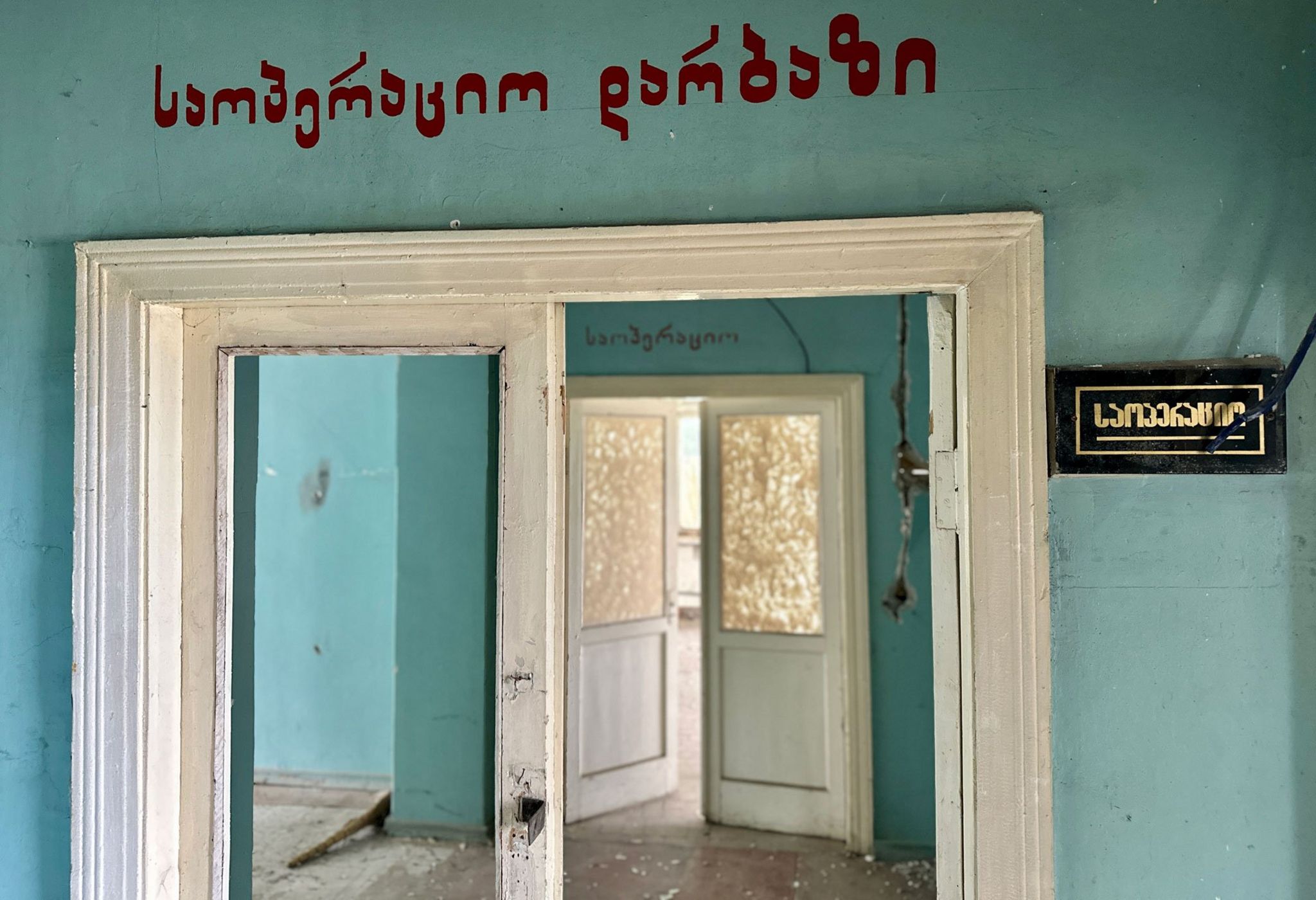
She has helped to reunite hundreds of families, but has not yet tracked down her own.
Tamuna discovered a black market in adoption that stretched across Georgia and went on from the early 1950s to 2005. She believes it was run by organised criminals and involved people from all sections of society, from taxi drivers to people high up in the government. Corrupt officials would fake the documents needed for the illegal adoptions.
“The scale is unimaginable, up to 100,000 babies were stolen. It was systemic,” she says.
Tamuna explains that she calculated this figure by counting the number of people who have contacted her and combining that with the time frame and the nationwide spread of cases. With a lack of access to documents – some have been lost and others aren’t being released – it is impossible to verify the exact figure.
Tamuna says many parents told her that when they asked to see the bodies of their dead babies they were told they had already been buried in the hospital grounds. She has since learned that cemeteries at Georgian hospitals never existed. In other cases parents would be shown dead babies who had been frozen in the mortuary.
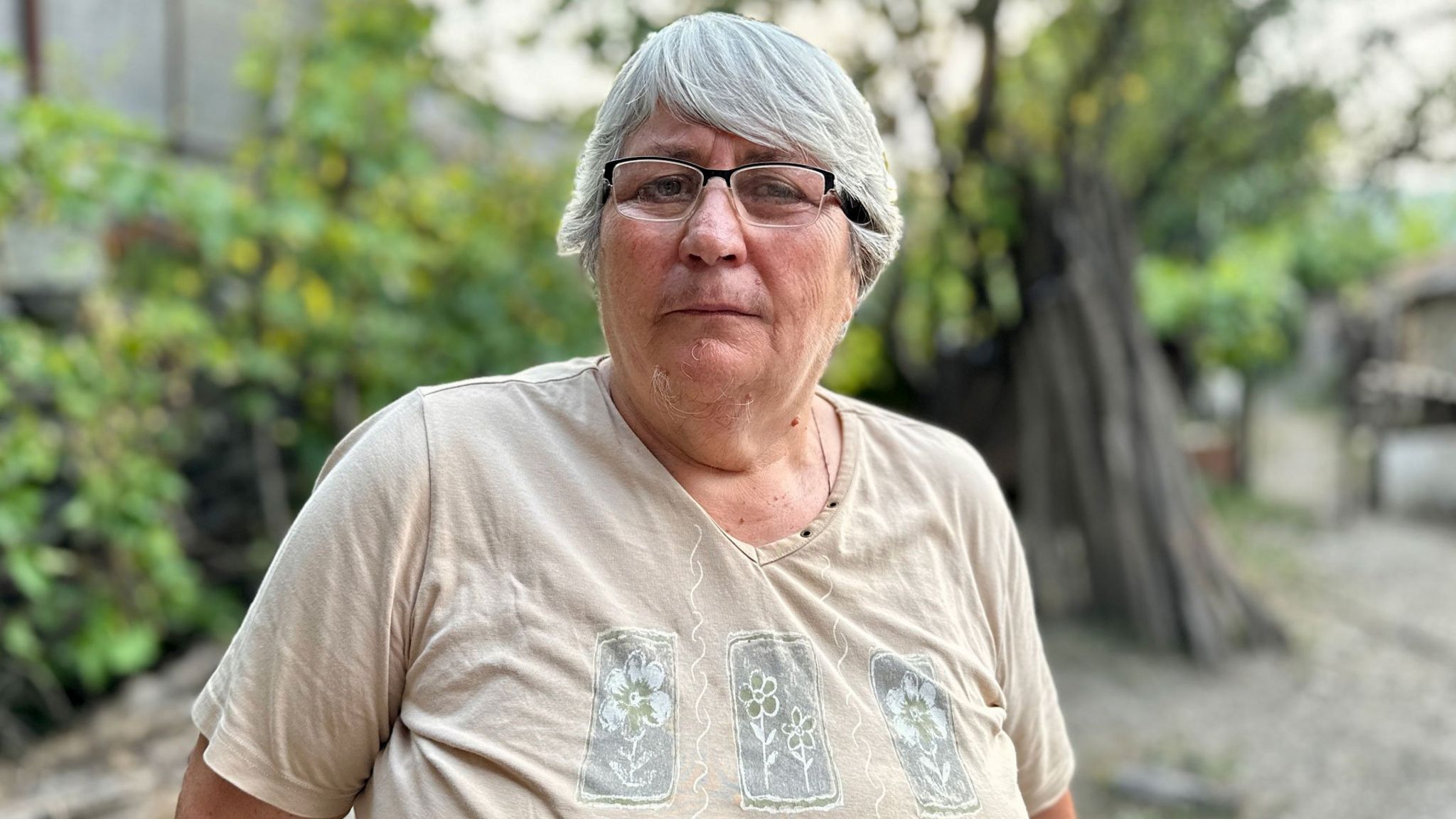
Tamuna says it was expensive to buy a child, about the equivalent of a year’s salary. She discovered that some children ended up with foreign families in the US, Canada, Cyprus, Russia and Ukraine.
In 2005 Georgia changed its adoption legislation and in 2006 it strengthened anti-trafficking laws, making illegal adoptions more difficult.
Another person looking for answers is Irina Otarashvili. She gave birth to twin boys in a maternity hospital in Kvareli, in the foothills of Georgia’s Caucasus mountains in 1978.
The doctors told her both boys were healthy but, for reasons that were never explained, they were kept away from her.
Three days after they were born, she was told they had both suddenly died. A doctor said they had respiratory problems.
Irina and her husband couldn’t make sense of it, but especially in Soviet times “you didn’t question authority” she says. She believed everything they said.
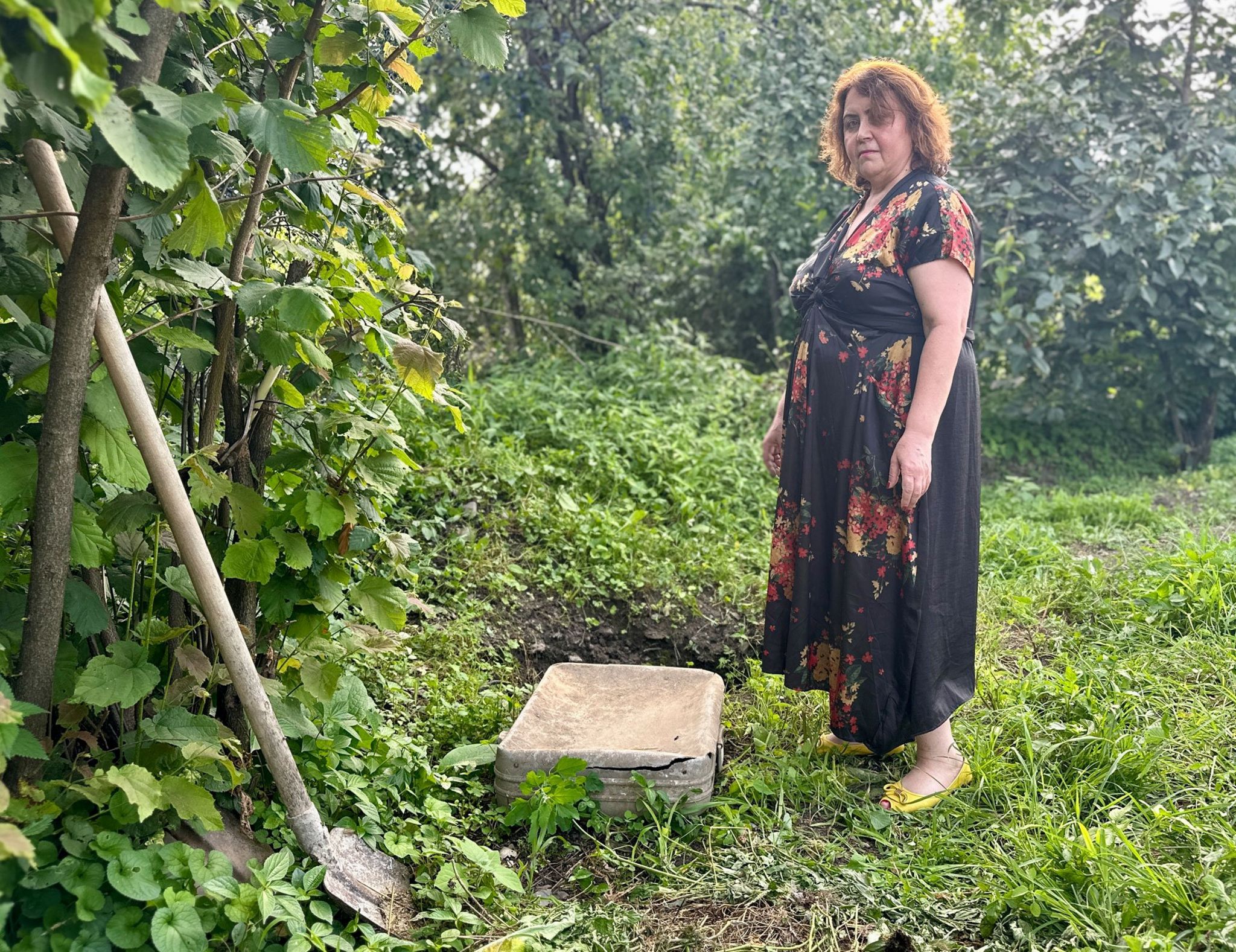
They were asked to bring a suitcase to take the infants’ remains away and to bury it in a cemetery or their back garden, as was common for babies at the time. The doctor told them never to open the case as it would be too upsetting to see the bodies.
Irina did as she was told, but 44 years later her daughter Nino found Tamuna’s Facebook group and grew suspicious. “What if our brothers didn’t really die?” she wondered. Nino and her sister Nana decided to dig up the suitcase.
“My heart was racing,” she says. “When we opened it there were no bones, just sticks. We didn’t know whether to laugh or cry.”
She says local police confirmed the contents were branches from a grape vine and there was no trace of human remains. She now believes her long-lost brothers could still be alive.
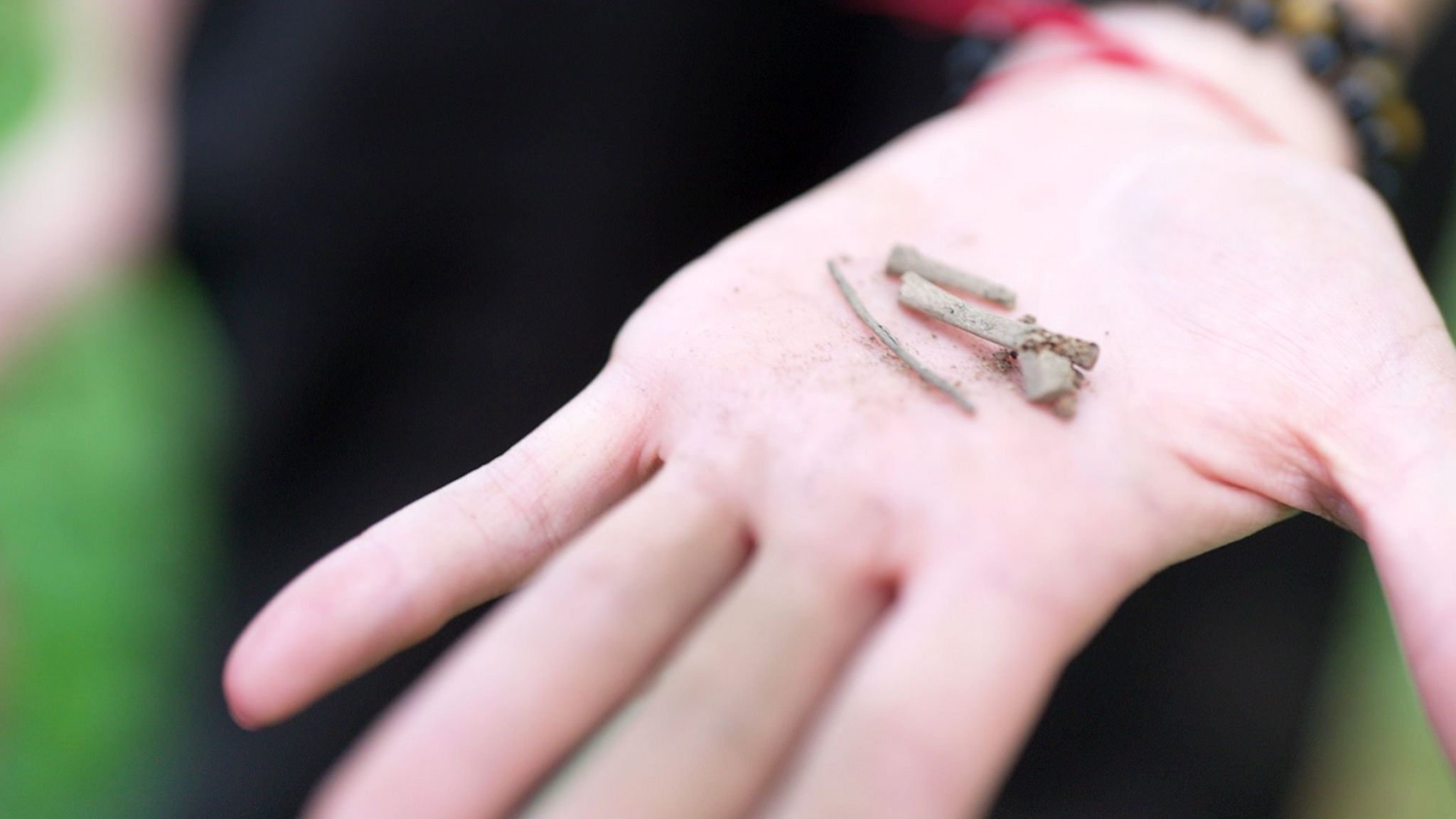
In the hotel in Leipzig, Amy and Ano prepare to meet their birth mother. Ano says she’s changed her mind and wants to back out. But it’s a momentary wobble and, taking a deep breath, she decides to go ahead.
Their biological mother, Aza, waits nervously in another room.
Amy opens the door hesitantly and Ano follows, almost pushing her sister into the room.
Aza lunges forward and embraces them tightly, one twin on each side. Minutes pass and locked in embrace, no-one speaks.
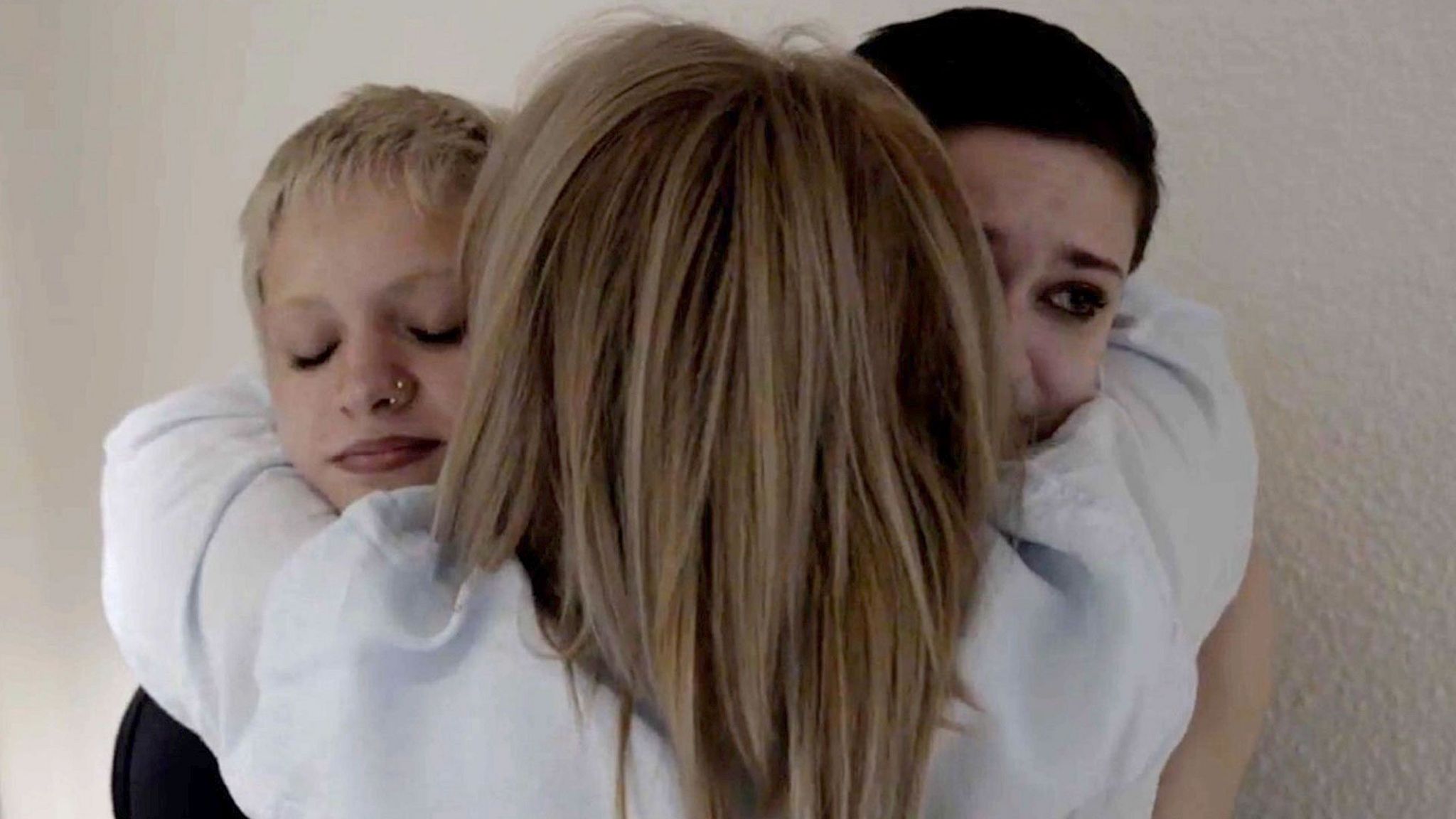
Tears stream down Amy’s face but Ano remains stoic and unwavering. She even looks a little irritated.
The three of them sit down to talk in private. Later, the twins say that their mother explained she had been ill after giving birth and fell into a coma. When she awoke, hospital staff told her that shortly after the babies were born, they had died.
She said that meeting Amy and Ano has given her life new meaning. Although they are not close, they are still in touch.
In 2022, the Georgian government launched an investigation into historic child trafficking. It told the BBC it has spoken to more than 40 people but the cases were “very old and historic data has been lost”. Journalist Tamuna Museridze says she has shared information but the government hasn’t said when it will release its report.
It has made at least four attempts to get to the bottom of what happened. These include an investigation in 2003 into international child trafficking which led to a number of arrests but little information has been made public. And in 2015, after another investigation, Georgian media reported that the general director of the Rustavi maternity hospital, Aleksandre Baravkovi, was arrested but cleared and returned to work.
The BBC approached the Georgian Interior Ministry for further information on individual cases but we were told that specific details would not be released due to data protection.
Tamuna has now joined forces with human rights lawyer Lia Mukhashavria to take the cases of a group of victims to the Georgian courts. They want the right to access their birth documents – something not currently possible under Georgian law.
They hope that this will help lay ghosts to rest. “I always felt like there was something or someone missing in my life,” says Ano. “I used to dream about a little girl in black who would follow me around and ask me about my day.” That feeling disappeared when she found Amy.
Features
RIDDHI-MA:

A new Era of Dance in Sri Lanka
Kapila Palihawadana, an internationally renowned dancer and choreographer staged his new dance production, Riddhi-Ma, on 28 March 2025 at the Elphinstone theatre, which was filled with Sri Lankan theatregoers, foreign diplomats and students of dance. Kapila appeared on stage with his charismatic persona signifying the performance to be unravelled on stage. I was anxiously waiting to see nATANDA dancers. He briefly introduced the narrative and the thematic background to the production to be witnessed. According to him, Kapila has been inspired by the Sri Lankan southern traditional dance (Low Country) and the mythologies related to Riddhi Yâgaya (Riddi Ritual) and the black magic to produce a ‘contemporary ballet’.
Riddhi Yâgaya also known as Rata Yakuma is one of the elaborative exorcism rituals performed in the southern dance tradition in Sri Lanka. It is particularly performed in Matara and Bentara areas where this ritual is performed in order to curb the barrenness and the expectation of fertility for young women (Fargnoli & Seneviratne 2021). Kapila’s contemporary ballet production had intermingled both character, Riddi Bisaw (Princes Riddhi) and the story of Kalu Kumaraya (Black Prince), who possesses young women and caught in the evil gaze (yaksa disti) while cursing upon them to be ill (De Munck, 1990).
Kapila weaves a tapestry of ritual dance elements with the ballet movements to create visually stunning images on stage. Over one and a half hours of duration, Kapila’s dancers mesmerized the audience through their virtuosic bodily competencies in Western ballet, Sri Lankan dance, especially the symbolic elements of low country dance and the spontaneity of movements. It is human bodily virtuosity and the rhythmic structures, which galvanised our senses throughout the performance. From very low phases of bodily movements to high speed acceleration, Kapila managed to visualise the human body as an elevated sublimity.
Contemporary Ballet

Figure 2 – (L) Umesha Kapilarathna performs en pointe, and (R) Narmada Nekethani performs with Jeewaka Randeepa, Riddhi-Ma, at Elphinstone Theatre, Maradana, 28th March 2025. Source:
Malshan Witharana
The dance production Riddhi-Ma was choreographed in several segments accompanied by a flow of various music arrangements and sound elements within which the dance narrative was laid through. In other words, Kapila as a choreographer, overcomes the modernist deadlock in his contemporary dance work that the majority of Sri Lankan dance choreographers have very often succumbed to. These images of bodies of female dancers commensurate the narrative of women’s fate and her vulnerability in being possessed by the Black Demon and how she overcomes and emancipates from the oppression. In this sense, Kapila’s dancers have showcased their ability to use the bodies not much as an object which is trained to perform a particular tradition but to present bodily fluidity which can be transformed into any form. Kapila’s performers possess formlessness, fluid fragility through which they break and overcome their bodily regimentations.
It was such a highly sophisticated ‘contemporary ballet’ performed at a Sri Lankan theatre with utmost rigour and precision. Bodies of all male and female dancers were highly trained and refined through classical ballet and contemporary dance. In addition, they demonstrated their abilities in performing other forms of dance. Their bodies were trained to achieve skilful execution of complex ballet movements, especially key elements of traditional ballet namely, improvisation, partnering, interpretation and off-balance and the local dance repertoires. Yet, these key ballet elements are not necessarily a part of contemporary ballet training (Marttinen, 2016). However, it is important for the dance students to learn these key elements of traditional ballet and use them in the contemporary dance settings. In this sense, Kapila’s dancers have achieved such vigour and somatic precision through assiduous practice of the body to create the magic on stage.
Pas de deux

Among others, a particular dance sequence attracted my attention the most. In the traditional ballet lexicon, it is a ‘pas de deux’ which is performed by the ‘same race male and female dancers,’ which can be called ‘a duet’. As Lutts argues, ‘Many contemporary choreographers are challenging social structures and norms within ballet by messing with the structure of the pas de deux (Lutts, 2019). Pas de Deux is a dance typically done by male and female dancers. In this case, Kapila has selected a male and a female dancer whose gender hierarchies appeared to be diminished through the choreographic work. In the traditional pas de deux, the male appears as the backdrop of the female dancer or the main anchorage of the female body, where the female body is presented with the support of the male body. Kapila has consciously been able to change this hierarchical division between the traditional ballet and the contemporary dance by presenting the female dominance in the act of dance.
The sequence was choreographed around a powerful depiction of the possession of the Gara Yakâ over a young woman, whose vulnerability and the powerful resurrection from the possession was performed by two young dancers. The female dancer, a ballerina, was in a leotard and a tight while wearing a pair of pointe shoes (toe shoes). Pointe shoes help the dancers to swirl on one spot (fouettés), on the pointed toes of one leg, which is the indication of the ballet dancer’s ability to perform en pointe (The Kennedy Centre 2020).
The stunning imagery was created throughout this sequence by the female and the male dancers intertwining their flexible bodies upon each other, throwing their bodies vertically and horizontally while maintaining balance and imbalance together. The ballerina’s right leg is bent and her toes are directed towards the floor while performing the en pointe with her ankle. Throughout the sequence she holds the Gara Yakâ mask while performing with the partner.
The male dancer behind the ballerina maintains a posture while depicting low country hand gestures combining and blurring the boundaries between Sri Lankan dance and the Western ballet (see figure 3). In this sequence, the male dancer maintains the balance of the body while lifting the female dancer’s body in the air signifying some classical elements of ballet.
Haptic sense

Figure 3: Narmada Nekathani performs with the Gara Yaka mask while indicating her right leg as en pointe. Male dancer, Jeewaka Randeepa’s hand gestures signify the low country pose. Riddhi-Ma, Dance Theatre at Elphinstone Theatre, 28th March 2025. Source: Malshan Witharana.
One significant element of this contemporary ballet production is the costume design. The selection of colour palette, containing black, red and while combining with other corresponding colours and also the costumes which break the traditional rules and norms are compelling. I have discussed in a recent publication how clothes connect with the performer’s body and operate as an embodied haptic perception to connect with the spectators (Liyanage, 2025). In this production, the costumes operate in two different ways: First it signifies sculpted bodies creating an embodied, empathic experience.
Secondly, designs of costumes work as a mode of three dimensional haptic sense. Kapila gives his dancers fully covered clothing, while they generate classical ballet and Sinhalese ritual dance movements. The covered bodies create another dimension to clothing over bodies. In doing so, Kapila attempts to create sculpted bodies on stage by blurring the boundaries of gender oriented clothing and its usage in Sri Lankan dance.
Sri Lankan female body on stage, particularly in dance has been presented as an object of male desire. I have elsewhere cited that the lâsya or the feminine gestures of the dance repertoire has been the marker of the quality of dance against the tândava tradition (Liyanage, 2025). The theatregoers visit the theatre to appreciate the lâsya bodies of female dancers and if the dancer meets this threshold, then she becomes the versatile dancer. Kandyan dancers such as Vajira and Chithrasena’s dance works are explored and analysed with this lâsya and tândava criteria. Vajira for instance becomes the icon of the lâsya in the Kandyan tradition. It is not my intention here to further discuss the discourse of lâsya and tândava here.
But Kapila’s contemporary ballet overcomes this duality of male-female aesthetic categorization of lâsya and tândava which has been a historical categorization of dance bodies in Sri Lanka (Sanjeewa 2021).

Figure 4: Riddhi-Ma’s costumes creates sculpted bodies combining the performer and the audience through empathic projection. Dancers, Sithija Sithimina and Senuri Nimsara appear in Riddhi-Ma, at Elphinstone Theatre, 28th March 2025, Source, Malshan Witharana.
Conclusion
Dance imagination in the Sri Lankan creative industry exploits the female body as an object. The colonial mind set of the dance body as a histrionic, gendered, exotic and aesthetic object is still embedded in the majority of dance productions produced in the current cultural industry. Moreover, dance is still understood as a ‘language’ similar to music where the narratives are shared in symbolic movements. Yet, Kapila has shown us that dance exists beyond language or lingual structures where it creates humans to experience alternative existence and expression. In this sense, dance is intrinsically a mode of ‘being’, a kinaesthetic connection where its phenomenality operates beyond the rationality of our daily life.
At this juncture, Kapila and his dance ensemble have marked a significant milestone by eradicating the archetypical and stereotypes in Sri Lankan dance. Kapila’s intervention with Riddi Ma is way ahead of our contemporary reality of Sri Lankan dance which will undoubtedly lead to a new era of dance theatre in Sri Lanka.
References
De Munck, V. C. (1990). Choosing metaphor. A case study of Sri Lankan exorcism. Anthropos, 317-328. Fargnoli, A., & Seneviratne, D. (2021). Exploring Rata Yakuma: Weaving dance/movement therapy and a
Sri Lankan healing ritual. Creative Arts in Education and Therapy (CAET), 230-244.
Liyanage, S. 2025. “Arts and Culture in the Post-War Sri Lanka: Body as Protest in Post-Political Aragalaya (Porattam).” In Reflections on the Continuing Crises of Post-War Sri Lanka, edited by Gamini Keerawella and Amal Jayawardane, 245–78. Colombo: Institute for International Studies (IIS) Sri Lanka.
Lutts, A. (2019). Storytelling in Contemporary Ballet.
Samarasinghe, S. G. (1977). A Methodology for the Collection of the Sinhala Ritual. Asian Folklore Studies, 105-130.
Sanjeewa, W. (2021). Historical Perspective of Gender Typed Participation in the Performing Arts in Sri Lanka During the Pre-Colonial, The Colonial Era, and the Post-Colonial Eras. International Journal of Social Science And Human Research, 4(5), 989-997.
The Kennedy Centre. 2020. “Pointe Shoes Dancing on the Tips of the Toes.” Kennedy-Center.org. 2020 https://www.kennedy-center.org/education/resources-for-educators/classroom-resources/media- and-interactives/media/dance/pointe-shoes/..
Acknowledgements
The author wishes to thank Himansi Dehigama for proofreading this article.
About the author:
Saumya Liyanage (PhD) is a film and theatre actor and professor in drama and theatre, currently working at the Department of Theatre Ballet and Modern Dance, Faculty of Dance and Drama, University of the Visual and Performing Arts (UVPA), Colombo. He is the former Dean of the Faculty of Graduate Studies and is currently holding the director position of the Social Reconciliation Centre, UVPA Colombo.
Features
Sri Lanka’s Foreign Policy amid Geopolitical Transformations: 1990-2024 – Part II

Chinese Naval Entry and End of Post-War Unipolarity
The ascendancy of China as an emerging superpower is one of the most striking shifts in the global distribution of economic and political power in the 21st century. With its strategic rise, China has assumed a more proactive diplomatic and economic role in the Indian Ocean, signalling its emergence as a global superpower. This new leadership role is exemplified by initiatives such as the Belt and Road Initiative (BRI) and the establishment of the Asian Infrastructure Investment Bank (AIIB). The Economist noted that “China’s decision to fund a new multilateral bank rather than give more to existing ones reflects its exasperation with the glacial pace of global economic governance reform” (The Economist, 11 November 2014). Thus far, China’s ascent to global superpower status has been largely peaceful.
In 2025, in terms of Navy fleet strength, China became the world’s largest Navy, with a fleet of 754 ships, thanks to its ambitious naval modernisation programme. In May 2024, the People’s Liberation Army Navy (PLAN) further strengthened its capabilities by commissioning the Fujian, its latest aircraft carrier. Equipped with an advanced electromagnetic catapult system, the Fujian can launch larger and heavier aircraft, marking a significant upgrade over its predecessors.
Driven by export-led growth, China sought to reinvest its trade surplus, redefining the Indian Ocean region not just as a market but as a key hub for infrastructure investment. Notably, over 80 percent of China’s oil imports from the Persian Gulf transit to the Straits of Malacca before reaching its industrial centres. These factors underscore the Indian Ocean’s critical role in China’s economic and naval strategic trajectories.
China’s port construction projects along the Indian Ocean littoral, often associated with the Belt and Road Initiative (BRI), exemplify its deepening geopolitical and economic engagement in the region. These initiatives encompass multipurpose berth development, deep-sea port construction, and supporting infrastructure projects aimed at enhancing maritime connectivity and trade. Key projects include the development of Gwadar Port in Pakistan, a strategic asset for China’s access to the Arabian Sea; Hambantota Port in Sri Lanka, which became a focal point of debt diplomacy concerns; the Payra deep-sea port in Bangladesh; as well as port and road infrastructure development in Myanmar’s Yunnan and Kyaukphyu regions and Cambodia’s Koh Kong.
While these projects were promoted as avenues for economic growth and regional connectivity, they also triggered geopolitical tensions and domestic opposition in several host countries. Concerns over excessive debt burdens, lack of transparency, and potential dual-use (civilian and military) implications of port facilities led to scrutiny from both local and external stakeholders, including India and Western powers. As a result, some projects faced significant pushback, delays, and, in certain cases, suspension or cancellation. This opposition underscores the complex interplay between economic cooperation, strategic interests, and sovereignty concerns in China’s Indian Ocean engagements.
China’s expanding economic, diplomatic, and naval footprint in the Indian Ocean has fundamentally altered the region’s strategic landscape, signalling the end of early post-Cold War unipolarity. Through the Belt and Road Initiative (BRI) initiatives, China has entrenched itself economically, financing. Diplomatically, Beijing has deepened its engagement with littoral states through bilateral agreements, security partnerships, and regional forums, challenging traditional Western and Indian influence.
China’s expanding naval deployments in the Indian Ocean, including its military base in Djibouti, and growing security cooperation with regional states, mark the end of unchallenged US dominance in the region. The Indian Ocean is now a contested space, where China’s presence compels strategic recalibrations by India, the United States, and other regional actors. The evolving security landscape in the Indian Ocean—marked by intensifying competition, shifting alliances, and the rise of a multipolar order—has significant implications for Sri Lanka’s geopolitical future.
India views China’s growing economic, political, and strategic presence in the Indian Ocean region as a key strategic challenge. In response, India has pursued a range of strategic, political, and economic measures to counterbalance Chinese influence, particularly in countries like Sri Lanka through infrastructure investment, defense partnerships, and diplomatic engagements.
Other Extra-Regional powers
Japan and Australia have emerged as significant players in the post-Cold War strategic landscape of the Indian Ocean. During the early phases of the Cold War, Australia played a crucial role in Western ‘Collective Security Alliances’ (ANZUS and (SEATO). However, its direct engagement in Indian Ocean security remained limited, primarily supporting the British Royal Navy under Commonwealth obligations. Japan, meanwhile, refrained from deploying naval forces in the region after World War II, adhering to its pacifist constitution and post-war security policies. In recent decades, shifting strategic conditions have prompted both Japan and Australia to reassess their roles in the Indian Ocean, leading to greater defence cooperation and a more proactive regional presence.
In the post-Cold War era, Australia has progressively expanded its naval engagements in the Indian Ocean, driven by concerns over maritime security, protection of trade routes, and China’s growing influence. Through initiatives, such as the Quadrilateral Security Dialogue (Quad) and deeper defence partnerships with India and the United States, Australia has bolstered its strategic presence in the Indian Ocean region.
Recalibration of Japan’s approach
Japan, too, has recalibrated its approach to Indian Ocean security in response to geopolitical shifts. Recognising the Indian Ocean’s critical importance for its energy security and trade, Japan has strengthened its naval presence through port visits, joint exercises, and maritime security cooperation. The Japan Maritime Self-Defence Force (JMSDF) has taken on a more active role in anti-piracy operations, freedom of navigation operations (FONOPS), and strategic partnerships with Indian Ocean littoral states. This shift aligns with Japan’s broader strategy of contributing to regional stability while balancing its constitutional constraints on military force projection.
Japan’s proactive role in the Indian Ocean region is evident in its diplomatic and defence engagements. In January 2019, Japan sent its Foreign Minister, Taro Kono, and Chief of Staff, Joint Staff, Katsutoshi Kawano, to the Raisina Dialogue, a high-profile geopolitical conference in India. Japan’s National Security Strategy, released in December 2022, identifies China’s growing assertiveness as its greatest strategic challenge and underscores the need to deepen bilateral ties and multilateral defence cooperation in the Indian Ocean. It also emphasises the importance of securing stable access to sea-lanes, through which more than 80 percent of Japan’s oil imports pass. In recent years, Japan has expanded its port investment portfolio across the Indian Ocean, with major projects in Sri Lanka, Bangladesh, and Myanmar. In 2021, Japan participated for the first time in CARAT-Sri Lanka (Cooperation Afloat Readiness and Training), a bilateral naval exercise. Japan’s Maritime Self-Defence Force returned for the exercise in January 2023, held at Trincomalee Port and Mullikulam Base.
Japan’s strategic interests in the Indian Ocean have been most evident in its involvement in port infrastructure development projects. Sri Lanka, Bangladesh, and Myanmar are key countries where early Chinese-led port construction faced setbacks. Unlike India, which carries historical and political complexities in its relations with these countries, Japan is better positioned to compete with China. In December 2021, a Japanese company established a ship repair and rebuilding facility in Trincomalee, complementing the already well-established Tokyo Cement factory. When the Sri Lanka Ports Authority announced plans in mid-2022 to develop Trincomalee as an industrial port—inviting expressions of interest from investors to utilise port facilities and up to 2,400 hectares of surrounding land—Trincomalee regained strategic attention.
The Colombo Dockyard, in collaboration with Japan’s Onomichi Dockyard, has established a rapid response afloat service in Trincomalee, marking a significant development in Japan’s engagement with Sri Lanka’s maritime infrastructure. This initiative aligns with Japan’s broader strategic interests in the Bay of Bengal, a region of critical economic and security importance. A key Japanese concern appears to be limiting China’s ability to establish a permanent presence in Trincomalee. This initiative underscores the broader strategic competition in the Indian Ocean. Trincomalee, with its deep-water harbour, has long been regarded as a critical maritime asset. Japan’s involvement reflects its efforts to deepen economic and strategic engagement with Sri Lanka amid growing regional competition. The challenge before Sri Lanka is how to navigate this strategic contest while maximising its national interests.
Other Regional Powers
In analyzing the evolving naval security architecture of the post-Cold War Indian Ocean, particular attention should be given to the naval developments of regional powers such as Pakistan, Indonesia, and Malaysia. In 2012, Pakistan established the Naval Strategic Force Command (NSFC) to strengthen Pakistan’s policy of Credible Minimum Deterrence (CMD). The creation of the NSFC suggests a shift toward sea-based deterrence, complementing Pakistan’s broader military strategy. In December 2012, Pakistan conducted a series of cruise missile tests from naval platforms in the Arabian Sea. Given India’s expanding maritime capabilities, which Pakistan views as a significant threat, the Pakistan Navy may consider deploying tactical nuclear weapons on surface ships as part of its evolving deterrence strategy. Sri Lanka’s foreign policy cannot overlook this development.
Indonesia also emerged as a significant player in the evolving naval security landscape of the Indian Ocean. In 2010, it launched a military modernisation programme aimed at achieving a ‘Minimum Essential Force’ (MEF) by 2024. As part of this initiative, Indonesia sought to build a modern Navy with 247 surface vessels and 12 submarines. One of the primary challenges faced by the Indonesian Navy (TNI-AL) is piracy. To enhance maritime security, Indonesia and Singapore signed the SURPIC Cooperation Arrangement in Bantam in May 2005, enabling real-time sea surveillance in the Singapore Strait for more effective naval patrols. In 2017, Indonesia introduced the Indonesian Ocean Policy (IOP) and subsequently incorporated blue economy strategies into its national development agenda, reinforcing its maritime vision. According to projections from the Global Firepower Index, published in 2025, the Indonesian Navy is ranked fourth in global ranking and second in Asia in terms of Navy fleet strength (Global Firepower, 2025).
In October 2012, the Royal Malaysian Navy (RMN) announced plans to build a second Scorpène simulator training facility at its base in Kota Kinabalu, in addition to submarine base in Sepanggar, Sabah, constructed in 2002. To enhance its naval capabilities, the RMN planned to procure 18 Littoral Mission Ships (LMS) for maritime surveillance and six Littoral Combat Ships (LCS) between 2019 and 2023. Malaysia and China finalised their first major defence deal during Prime Minister Najib Razak’s visit to Beijing in November 2016. During this visit, Malaysia’s Defence Ministry signed a contract to procure LMS from China, as reported by The Guardian. Despite this agreement, Malaysia continues to maintain amicable relations with both China and India, as does Indonesia.
The increasing presence of major naval powers, the rise of regional stakeholders, and the growing significance of trade routes and maritime security have transformed the Indian Ocean into a central pivot of both regional and global politics, with Sri Lanka positioned at its heart. (To be Continued)
by Gamini Keerawella
Features
More excitement for Andrea Marr…

Sri Lankan Andrea Marr, now based in Australia, is in the spotlight again. She says she has teamed up with a fantastic bunch of Sri Lankan musicians, in Melbourne, and the band is called IntoGroove.
“The band has been going strong for many years and I have been a fan of this outfit for quite a few years; just love these guys, authentic R&B and funk.”
Although Andrea has her original blues band, The McNaMarr Project, and they do have a busy schedule, she went on to say that “when the opportunity came up to join these guys, I simply couldn’t refuse … they are too good.”
IntoGroove is Jude Nicholas (lead vocals), Peter Menezes (bass), Keith Pereira (drums), Blaise De Silva (keyboards) and and Steve Wright (guitar).

Andrea Marr: Powerhouse of the blues
“These guys are a fantastic band and I really want everyone to hear them.”
Andrea is a very talented artiste with many achievements to her credit, and a vocal coach, as well.
In fact, she did her second vocal coaching session at Australian Songwriters Conference early this year.
Her first student showcase for this year took place last Sunday, in Melbourne, and it brought into the spotlight the wonderful acts she has moulded, as teacher and mentor.
What makes Andrea extra special is that she has years of teaching experience and is able to do group vocal coaching for all styles, levels and genres.
In January, this year, she performed at the exclusive ‘Women In Blues’ showcase at Alfred’s On Beale Street (rock venue with live entertainment), in Memphis, in the USA, during the International Blues Challenge when bands from all over the world converge on Memphis for the ‘Olympics of the Blues.’

The McNaMarr Project with Andrea and Lindsay Marr in the
vocal spotlight
This was her fourth performance in the home of the blues; she has represented Australian Blues three times and, on this occasion, she went as ambassador for Blues Music Victoria, and The Melbourne Blues Appreciation Society’s ‘Women In Blues’ Coordinator.
Andrea was inducted into the Blues Music Victoria Hall of Fame in 2022 and released her 10th album which hit #1 on the Australian Blues Charts.
Known as ‘the pint-sized powerhouse of the blues’ for her high energy, soulful, original music, Andrea is also a huge fan of the late Elvis Presley and has checked out Graceland, in Memphis, Tennessee, USA, many times.
In Melbourne, the singer also plays a major role in helping Animal Rescue organisations find homes for abandoned cats.
Andrea Marr’s wish, at the moment, is that the Lankan audience, in Melbourne, would get behind this band, IntoGroove. They are world class, she added.
-

 Business1 day ago
Business1 day agoColombo Coffee wins coveted management awards
-

 Features2 days ago
Features2 days agoStarlink in the Global South
-

 Business3 days ago
Business3 days agoDaraz Sri Lanka ushers in the New Year with 4.4 Avurudu Wasi Pro Max – Sri Lanka’s biggest online Avurudu sale
-

 Business4 days ago
Business4 days agoStrengthening SDG integration into provincial planning and development process
-

 Business3 days ago
Business3 days agoNew SL Sovereign Bonds win foreign investor confidence
-

 Sports5 days ago
Sports5 days agoTo play or not to play is Richmond’s decision
-

 Features2 days ago
Features2 days agoModi’s Sri Lanka Sojourn
-

 Sports4 days ago
Sports4 days agoNew Zealand under 85kg rugby team set for historic tour of Sri Lanka













